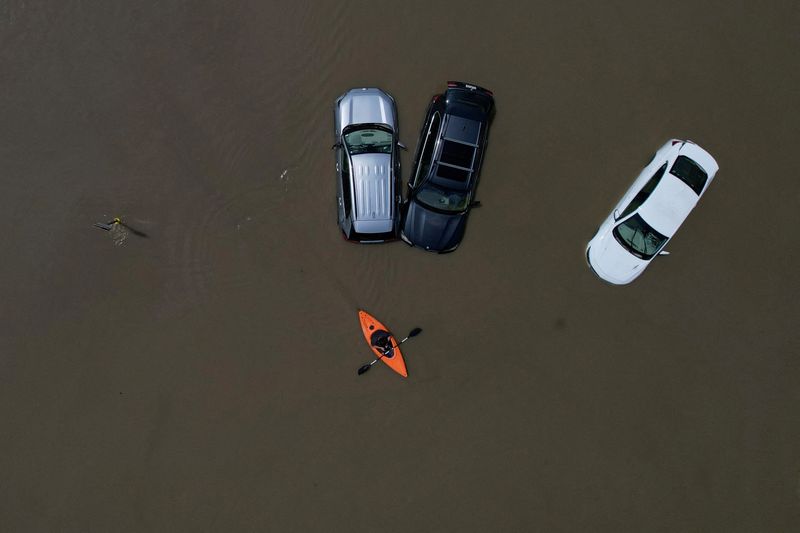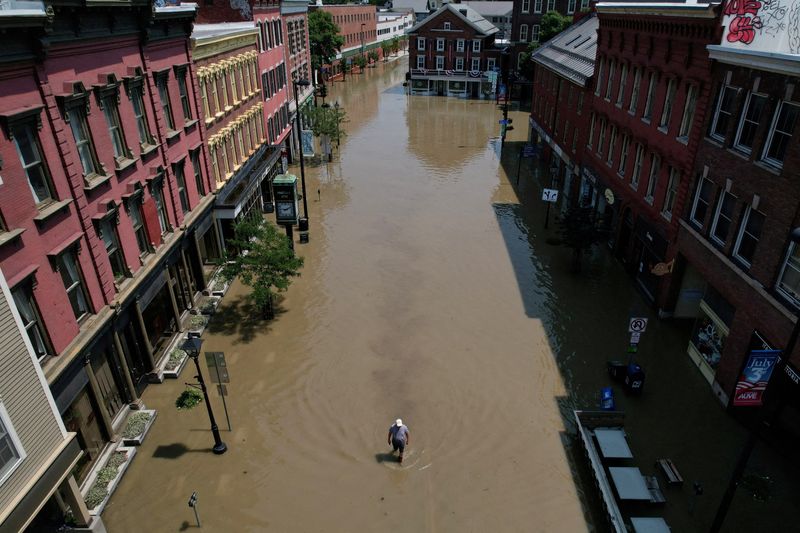By Rachel Nostrant
(Reuters) – State officials across the U.S Northeast are warning residents about contaminated water following mass floods last week that swept raw sewage, pesticides, runoff fuel and other types of pollutants into private and public water systems.
Health officials in Vermont, New Hampshire and Massachusetts have issued advisories this week cautioning that water sources across the region might not be safe to drink and physical contact could lead to rashes, sore throats and bacterial infections.
The warnings follow storms that dumped more than a foot of rain on some areas, prompting flash floods that inundated rivers and streams and killed at least seven people in the region. Run off from the storms has also polluted local waterways and wells with contaminants from fuel tanks, farms and flooded homes, officials said.
“If you’re in a flooded area and get your water from a well or spring, assume your water is contaminated,” the Vermont Department of Health warned as part of its flood recovery plan.
Well water is not currently recommended for drinking, cooking, washing food or for brushing teeth until testing can be done, the health department said.
Because of Vermont’s heavy concentration of dairy and produce farms, it is likely that large amounts of pesticides and other chemical contaminants were washed into local waterways, said Ben Truman, a spokesperson for the Vermont Department of Health.
“Even though they usually do a good job, most of the farms were hit pretty badly, so whatever was on the soil, from manure to pesticides … that ends up in the lakes and streams,” he said.
In Massachusetts, the city of Holyoke said this week that millions of gallons of discharge consisting of rainwater and untreated sewage or partially treated sewage had leaked into the Connecticut River.
City pipes in western Massachusetts were designed to open into the river in the event of severe overflow instead of into homes or streets.
As New England’s longest river, the Connecticut River runs through Connecticut, Massachusetts, New Hampshire and Vermont and provides 70 percent of all the fresh water entering Long Island Sound, according to the Connecticut River Conservancy.
Boil water advisories are in effect across much of Vermont, New Hampshire, and parts of Massachusetts.
(Reporting by Rachel Nostrant; Editing by Aurora Ellis)

